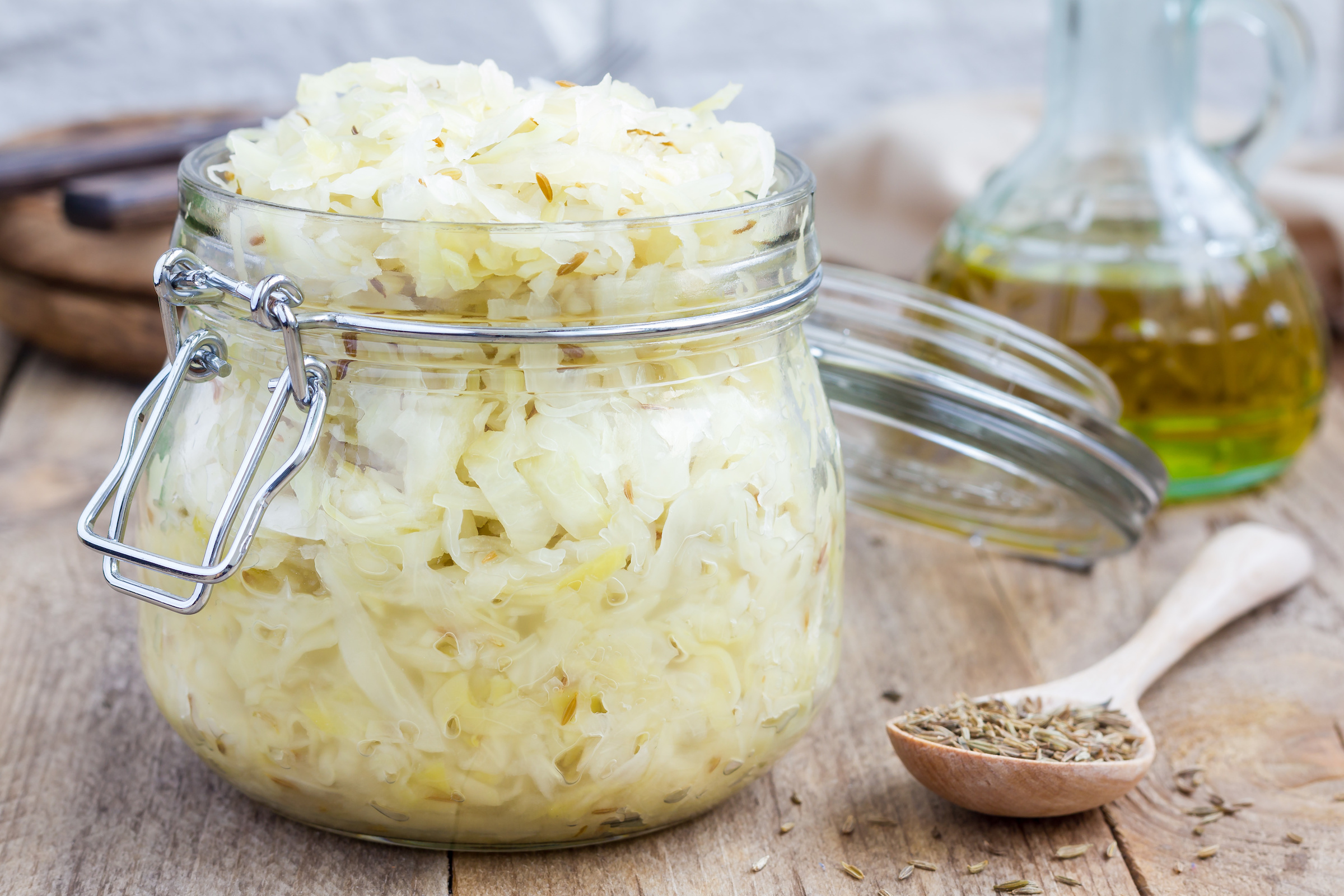Lemon cabbage sauerkraut
Lacto-fermented vegetables are amazing. The process not only preserves vegetables naturally, but it enhances the nutrient content while making minerals more available to the body. Most impressively, the good bacteria they contain survive the digestive tract to reach the colon where they produce vitamins and enzymes that boost health and aid digestion.
Traditionally, all cultures ate some form of fermented food, but many of us have forgotten this healthy family habit. The fantastic thing about fermenting vegetables is that it’s simple, quick and pretty foolproof.
PREPARATION TIME
10 mins
COOKING TIME
5-10 days to ferment
YIELDS
Makes around 1/2 kg
NOTES
Some health problems such as SIBO or histamine sensitivity may be made worse with anything fermented
INGREDIENTS
1/4 cabbage
1 clove garlic, finely grated
1/2 lemon, juice and zest
Herbs or spices if desired such as caraway seeds, mustard seeds or dill
2-3 tsp Himalayan or Celtic Sea salt
DIRECTIONS
Remove any outer leaves of the cabbage and rinse in cold water. Set a few leaves aside
Core the cabbage and with a stainless-steel knife or mandolin and slice thinly, placing in a large bowl
Add the garlic, lemon juice, zest, herbs or spices if using and 2 tsp of the salt, massaging it into the sliced cabbage with your hands as though kneading bread
Taste. It should be salty but not overwhelming. Add more if necessary
By now the cabbage should be limp and liquid should be pooling. If not, recheck the salt and let it stand for 30-45 mins more before massaging again
Transfer the mixture into a jar or jars. Press down with your fingers or fist so that some brine appears. Leave 6-9 cm of empty space on top
Top with one or two of the reserved outer cabbage leaves. Tighten the lid and set aside in a cool spot, somewhere you won’t forget but out of direct sunlight
Make sure you undo the lid daily to release any gas and also ensure the vegetables are submerged, pressing down as needed to bring the brine back to the surface
From day 5 you can test the kraut with a clean utensil. When it’s ready it has a pleasingly sour, pickled tasting but without the strong acidity of vinegar, the veggies have softened a bit but retain some crunch and the colour is that of cooked cabbage
Keep in the fridge for a year

